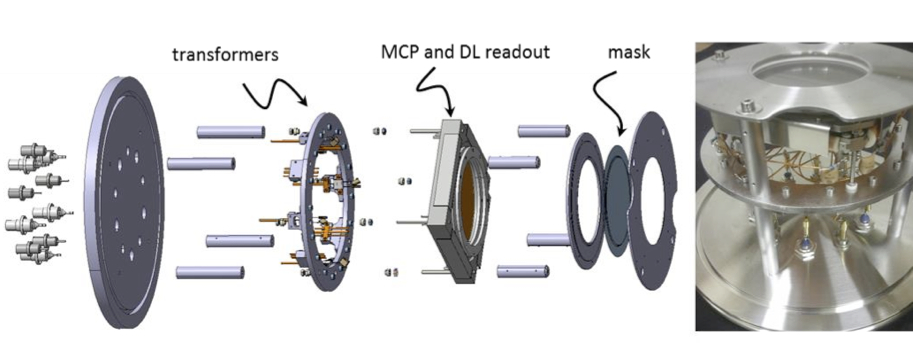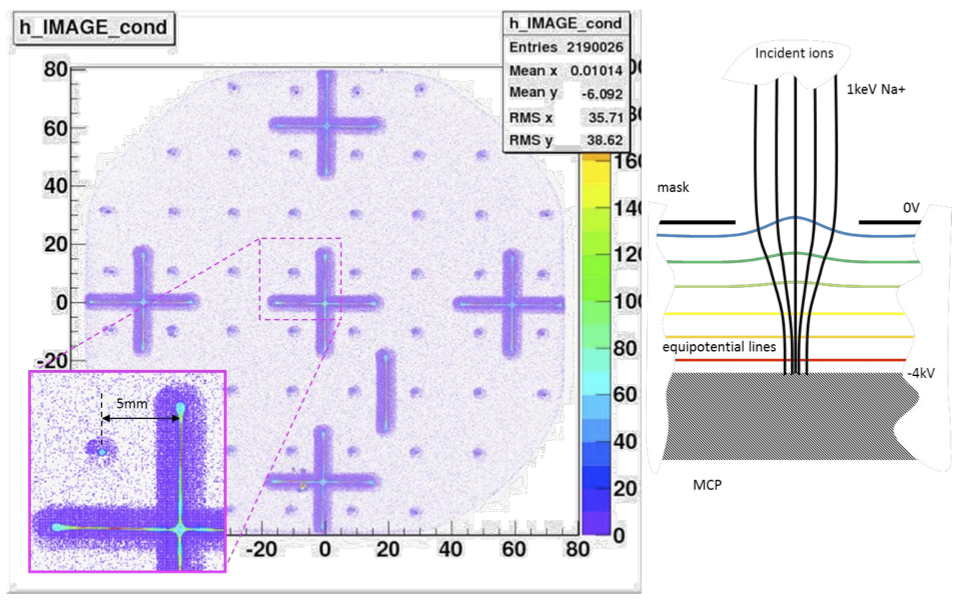FASTER USE CASE
HIGH RESOLUTION POSITION MEASUREMENTS USING A MICRO-CHANNELS PLATE WITH A DELAY LINE READOUT
SUMMARY
We discussed, in a previous use-case datasheet, the use of resistive anode readout for localization purposes. This kind of device is simple to develop and easy to use but suffers some basic defects that can complicate their use:
- The dynamics needed on localization channels is the product of the input particles dynamics and of the localization dynamics. In order to fulfill localization uncertainty, you must guaranty low noise operations (low noise preamplifiers and perfect EMC).
- The detector “dead time” (due to the resistors and parasitic capacitances) is about some tens of nanoseconds (say 60ns for instance) and if two particles hit the detector in this time interval, it’s impossible, neither to localize the particles, nor to say that there was two particles.

In order to cope with these problems, delay lines anodes readout has been developed. The main ideas are:
- If you can measure a pulse arrival time with, say 200ps uncertainty, travelling thru a delay line of, say 100ns for instance (corresponding to the length of your detector), you naturally have a localization uncertainty of 1/500 of your detector length (whatever the incident particle dynamics).
- The detector dead time is now purely defined by the rise-time and fall-time of the different signals (say a few ns) and it’s generally possible to know that the several particles hit the detector at the same time, and sometimes, to reconstruct, in this particular case, the most probable impinging positions.
In fact, the main drawback of delay-lines readout is that it relies on time measurement, which is generally difficult to perform correctly (at least time calibration on each individual channel). Numerical data acquisition systems, like FASTER, are based on quartz clocking synchronization and this way, largely simplify timing calibration procedures.
WHAT WILL YOU FIND IN THIS DOCUMENT ?
- An example of delay line readout anode coupled to a micro-channels plate detector.
- How to perform detector calibration and data analysis.
- How to make high performances localizations using this detector with FASTER.
PICTURES

